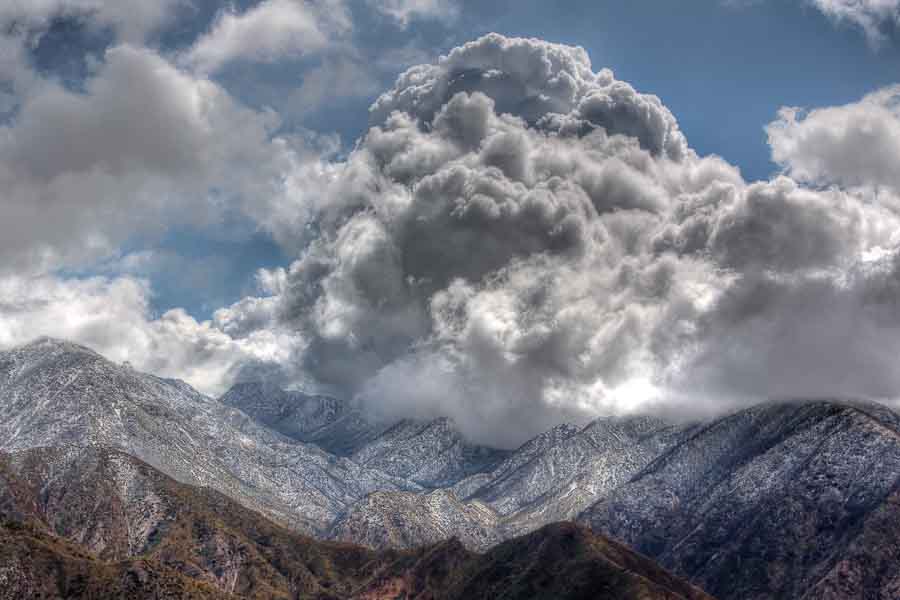As defined by
Merriam Webster’s Collegiate Dictionary, snow is
“precipitation in the form of white ice crystals formed
directly from the water vapor of the air at a temperature of
less than 32˚F (0˚C).”1 This definition
will be the primary
focus for my examination of snow physics.
Clouds
are the primary source of snow. Air contains tiny
particles of water. Relative
humidity is a measurement of how much water air can hold at
a given temperature. Air
is saturated with water at 100 percent humidity. Clouds form when
the air cools and the relative humidity increases above 100
percent.2 Water droplets or ice
crystals in clouds are very small having “a diameter of a
hundredth of a millimeter.”3 Typically, ice crystals
form “9 to 12 kilometers (30,000 to 40,000 feet) above,
temperatures cool to -60˚C (-75˚F), a level rarely reached
even at the poles.”4 Ice forms best
when there is already a template to order the molecules such
as dust particles or ice that is already present.
Clouds consist of water droplets, ice crystals, pollen, bacteria, chemicals produced by humans, dust, and fungi to name a few. The contents of the cloud determine the chemical make-up of the snow that is formed. These particles become the nuclei of snow. This can lower the formation temperature to just below freezing “whereas a pure water droplet will remain unfrozen until the temperature falls to between -18 to -31˚C, depending on its size.”5 The number of particles in the air capable of becoming a nuclei for snow will increase as temperatures reduce.
Snow has the potential to form numerous patterns. Some of the
patterns formed are diamond dust,
stellar dendrites, sectored plates, columns and needles,
capped columns, triangular crystals, split stars and split
plates, twinned crystals, twelve-sided snowflakes and double
stars, chandelier crystals, spatial dendrites, and rimed
snowflakes.6
Each pattern will
be created within a different set of parameters. They are created
when specific conditions of humidity, temperature, and air
density are met. This
diagram shows the morphology:
Clouds associated with snow formation and snowfall are Cirrus and Altocumulus, which produce light showers. Nimbostratus clouds produce continuous snow showers. Cirrus and Altocumulus clouds are associated with warm fronts. Cumulus and Cumulonimbus clouds are associated with cold fronts. Cumulus clouds produce light snow showers and Cumulonimbus clouds produce heavy snow showers.7

